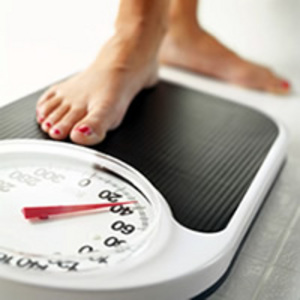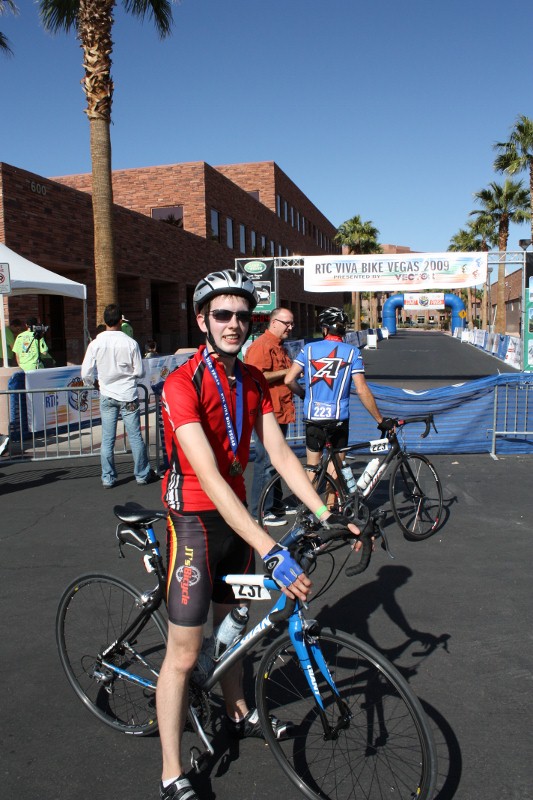Welcome to the first installment of Fuel Your Fitness!
I’d like to feature a different sports nutrition topic each week, or every other week, here at eatingRD to help fuel your performance, reach your personal fitness goals or just provide interesting information. I’m open for any suggestions too and have already received great ideas from many of you, which I’ve been researching and compiling. I picked Friday not only because it goes well together — Fuel Your Fitness Fridays–, but because the weekends can be the start to a great fitness opportunity. Many of us are very busy during the week and sometimes let workouts pass, but I’m hoping that featuring this important information on Fridays will motivate those weekend workouts 🙂
~~~~
While one would think that active individuals never have to worry about losing or maintaining weight because they are so active, think again!! Many athletes feel pressured to lose weight for aesthetic reasons, especially in sports like dancing and wrestling, and believe losing weight will vastly improve performance. Heck, I just want to look good naked and feel good about myself too!
[source]
The basic equation of all weight loss is not consuming as much energy as we expend. But that equation can mean different things for different people. Each individual resting metabolic rate (RMR) can vary, but it accounts for 60-75% of calorie expenditure, while the thermic effect of food (TEF) accounts for 5-10% and physical activity accounts for 15-30%.
The main goal is to reduce weight, preferably fat, without decreasing performance or lean body mass, while still having enough energy to make it through the day! When we don’t eat enough during the day for various reasons like being busy, not planning ahead, etc, workouts tend to really flop and it forces us to not work as hard and/or workouts stop prematurely. But, on the other hand we don’t want to eat like a horse and see all those precious workout hours go to waste, right? The equation isn’t really all that basic because as individuals we each have different metabolisms, and as we decrease our intake over time, our metabolism will slow down too. Hingsts states
“In a 2007 study, active individuals who followed a diet/exercise regimen for more than half a year did experience a decrease in RMR, starting around the six-month mark” (Training & Conditioning, 2009).
I found this so interesting to think about! Essentially athletes can maintain a normal RMR for short-term period of calorie restriction because they are active, but eventually after about 3-6 months of calorie restriction, their metabolism can decrease which can hamper performance and training goals. Decreasing calories below one’s needs can be an effective way to lose weight, but it shouldn’t be a long-term change for most athletes as far as optimal performance goes. It does make sense though because as we decrease our weight we have less mass and require less calories to maintain that mass.
Hingst, who works with athletes at the University of Nebraska, has some great tips he uses that help athletes to drop weight all while maintaining lean body mass and preventing any declines in performance. I thought these would be great to share.
- Establish Calorie Goals. It would be great if we all had a magic button that automatically told us how many calories we need each day, but estimation is usually the best tool to use in real-world, non-lab situations. Usually I use the Harris-Benedict Equation for determining the basal energy requirements and then multiply by activity factors depending on how many hours the individual is active/not active in a 24-hour period. ADA recommends multiplying by 1.6 for those performing moderate/active training and 2.0 for vigorous. A multiplier of 1.3 can be used for general inactivity.
There is another equation made specifically for athletic populations:
(9 x weight in kg) + (11.7 x height in cm) – 857 = RMR
Here is an example for a sedentary individual:
|
Estimated RMR = 1378 |
60kg | Activity Factor | |
| Resting | 12 hours | 1.0 | 12.00 |
| Very Light Activity | 10 hours | 1.5 | 15.00 |
| Light Activity | 2 | 2.5 | 5.00 |
| Totals | 24 | 32.00 |
32/24 = 1.33 1378 x 1.33 = 1833kcals/day
A general and safe rule of thumb is to decrease calorie intake by about 500 kcals per day to lose 1 pound per week.
- Increase Meal Frequency. It’s important to eat consistently throughout the day and not go too long without something. This keeps our metabolism revving and burning 🙂 This can also improve insulin resistance, blood lipid profiles and keep our energy constant. Try spreading out 6 small-ish meals throughout the day instead of 3 larger ones.
- Timing is Important for Energy. It’s important to make sure to be getting enough nutrients when restricting food intake, especially for active individuals. Carbs before exercise can enhance our ability to maintain glycogen stores and protein can prevent muscle breakdown. Have a substantial meal about 3-4 hours before you plan to workout. As it gets closer to your workout/training time, simply reduce the meal/snack size and go easy on too much fat, protein or fiber because these can cause tummy issues in some if eaten too close to the start of exercise. During exercise lasting longer than 60-90 minutes it’s important to ingest energy during activity like electrolyte-replacement beverages. And of course post-workout recovery is essential for rebuilding and preparing for the next sweat session. 10-20 grams of high quality protein and high-glycemic carbohydrates are ideal for optimal recovery.
Check out this post for more specifics of carbohydrate amounts and timing.
- Weight Training. This wasn’t one of his tips, but I believe it is certainly an important aspect in any weight loss program. Even though we all know that muscle weighs more than fat, weight training and building muscle is essential to losing weight because, not only does muscle burn more energy than fat, it also keeps our metabolisms revving.
- Balance and Portion. Make sure to be eating a balanced diet, full of variety and nutrient-dense foods. Lots of color! Eating more frequent meals can provide more opportunity to go over calorie needs, so just be aware of portions. It’s also important for athletes to consider serious weight-loss only in their ‘off-season’ and not during the most critical time of training. Of course if you are not necessarily an ‘athlete’ and weight loss is a top-priority, reducing calorie expenditure in a safe, tapered method is certainly the best way to go 🙂
I’d love to hear your stories and tips as well!
Stay tuned for the next installment of FYF which will feature information on Overtraining Sydrome.
~~~~
*In other news* Chris is competing in the Tour de Cure Century Ride for the American Diabetes Association. He’s trying to raise at least the minimum of $150, but would appreciate any contribution (link above). All proceeds are tax deductible and support a great cause in the fight of this leading chronic disease. I know there are so many other things going on in this world right now, and thanks so much for your help if you can!
Here is a picture after the Viva Bike Vegas Century Ride (118 miles!). I was the camera crew and support 🙂
Have a great, active weekend!
It’s my little brother’s 8th birthday party this weekend, which should be fun with all the crazy kiddos running around 🙂 I’m also going to be testing out some new training products I just got, so we’ll see how it goes!
Any weekend plans???






I love these tips!! They are great and most importantly, SAFE.
Comment by Jessica @ How Sweet — January 29, 2010 @ 8:28 am
Great advice! And yep, a lot of athletes want to lose weight or feel pressured to lose weight. And it takes a lot of thought to fuel an athlete properly!
Great post, and have a great weekend!
Comment by Nicole, RD — January 29, 2010 @ 11:10 am
Great tips!
When is tour de cure? My husband and I are training for MS-150, 180 mile bike ride from Houston to Austin and organized by the MS society.
Comment by Gelareh @ Nutritious Foodie — January 29, 2010 @ 12:13 pm
I believe it’s April 10th here in Vegas. Actually Chris was telling me about the MS society ride and was wanting to do that sometime in the future too. That’s awesome!! When is it??
Comment by Kristen :) — January 29, 2010 @ 1:00 pm
I love these little bloggity blogs. Chris is sick for riding his bike that much. 🙂 Hope you two have a good weekend.
Comment by Allen — January 29, 2010 @ 1:21 pm
Have fun at your bros party, I have Sunday off for once which means a trip to the gym yay! xx
Comment by Tamizn — January 29, 2010 @ 2:58 pm
These are great tips! I am in complete agreement with the smaller meals throughout the day. More frequent smaller meals helps keep my energy great all day long… plus it keeps me from being grouchy 🙂
Comment by Heather @ Get Healthy With Heather\ — January 29, 2010 @ 10:06 pm
what a great post! happy birthday to your brother! I love your research tidbit- I am going to tie that into my thesis!! 🙂
Comment by bhealthier — February 1, 2010 @ 1:15 pm
[…] FYF: Safe Weight Loss for Athletes […]
Pingback by Fat Loss – The Best Post Workout Meal For Serious Fat Burning | Weight Issues — March 19, 2010 @ 5:27 am
ok so I”ve been using these formulas lately to figure out my calories and I”m just confused!
They say with moderate activity I should be able to eat like 2700 a day…but I’m eating 2000 and not losing any weight.
Comment by RunToTheFinsih — April 22, 2010 @ 4:13 pm